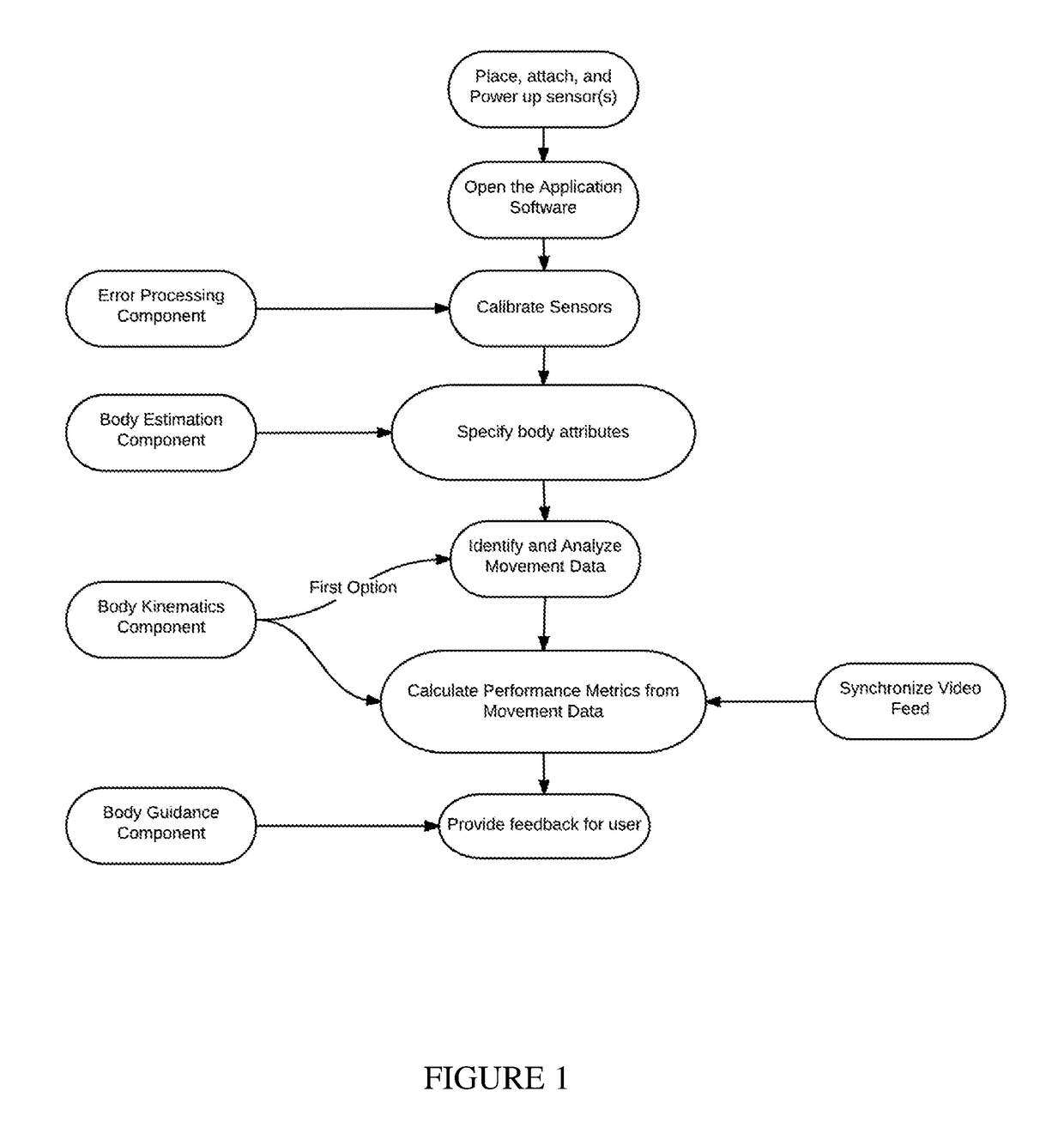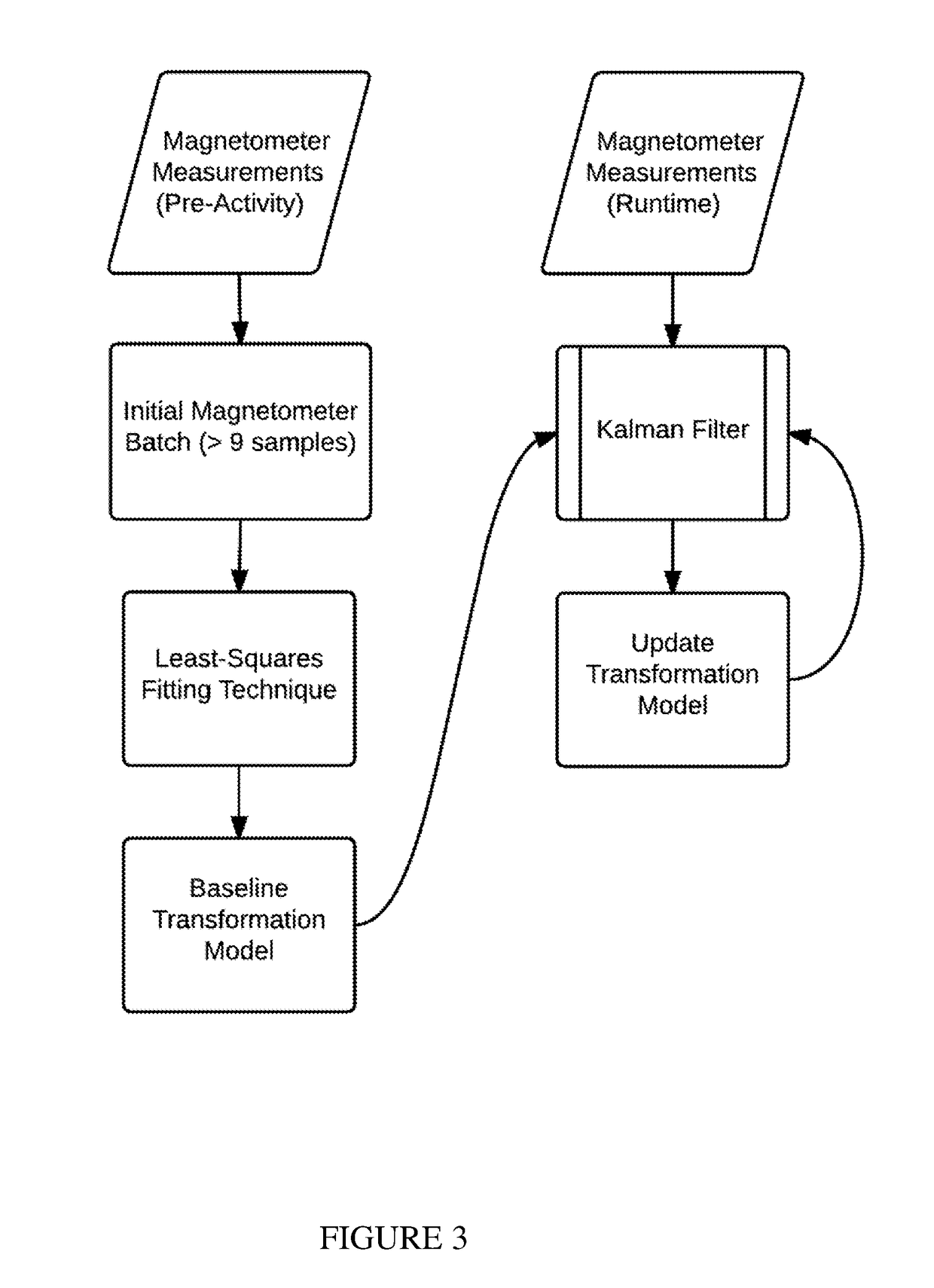Training systems with wearable sensors for providing users with feedback
a technology of user feedback and training system, which is applied in the direction of teaching apparatus, gymnastics, instruments, etc., can solve the problems of high cost of camera equipment, high cost of hiring trainers or coaches, and tedious set-up process
- Summary
- Abstract
- Description
- Claims
- Application Information
AI Technical Summary
Benefits of technology
Problems solved by technology
Method used
Image
Examples
Embodiment Construction
[0039]Referring initially to FIG. 1, an exemplary training system uses a variety of components and configurations to provide a method for characterizing, analyzing, and supplying a user real-time feedback on various performance metrics related to athletic and medical related movements. For example, at least some intelligent automated health and fitness analysis system(s) may be configured, designed, and / or operable to provide various different types of operations, functionalities, and / or features, such as one or more of the following: (i) automate calculation, detection, and input of data relating to exercise movement, such as (for example) repetitions, set completion, exercise completion, movement completion, range of motion, power, eccentric and concentric phase, balance, heart rate, caloric expenditure, tempo, acceleration, velocity, position, gamification score, form efficiency, rest time, distance traveled, force of impact, and 3D avatar movement; in addition to automating the ...
PUM
 Login to View More
Login to View More Abstract
Description
Claims
Application Information
 Login to View More
Login to View More - R&D
- Intellectual Property
- Life Sciences
- Materials
- Tech Scout
- Unparalleled Data Quality
- Higher Quality Content
- 60% Fewer Hallucinations
Browse by: Latest US Patents, China's latest patents, Technical Efficacy Thesaurus, Application Domain, Technology Topic, Popular Technical Reports.
© 2025 PatSnap. All rights reserved.Legal|Privacy policy|Modern Slavery Act Transparency Statement|Sitemap|About US| Contact US: help@patsnap.com



